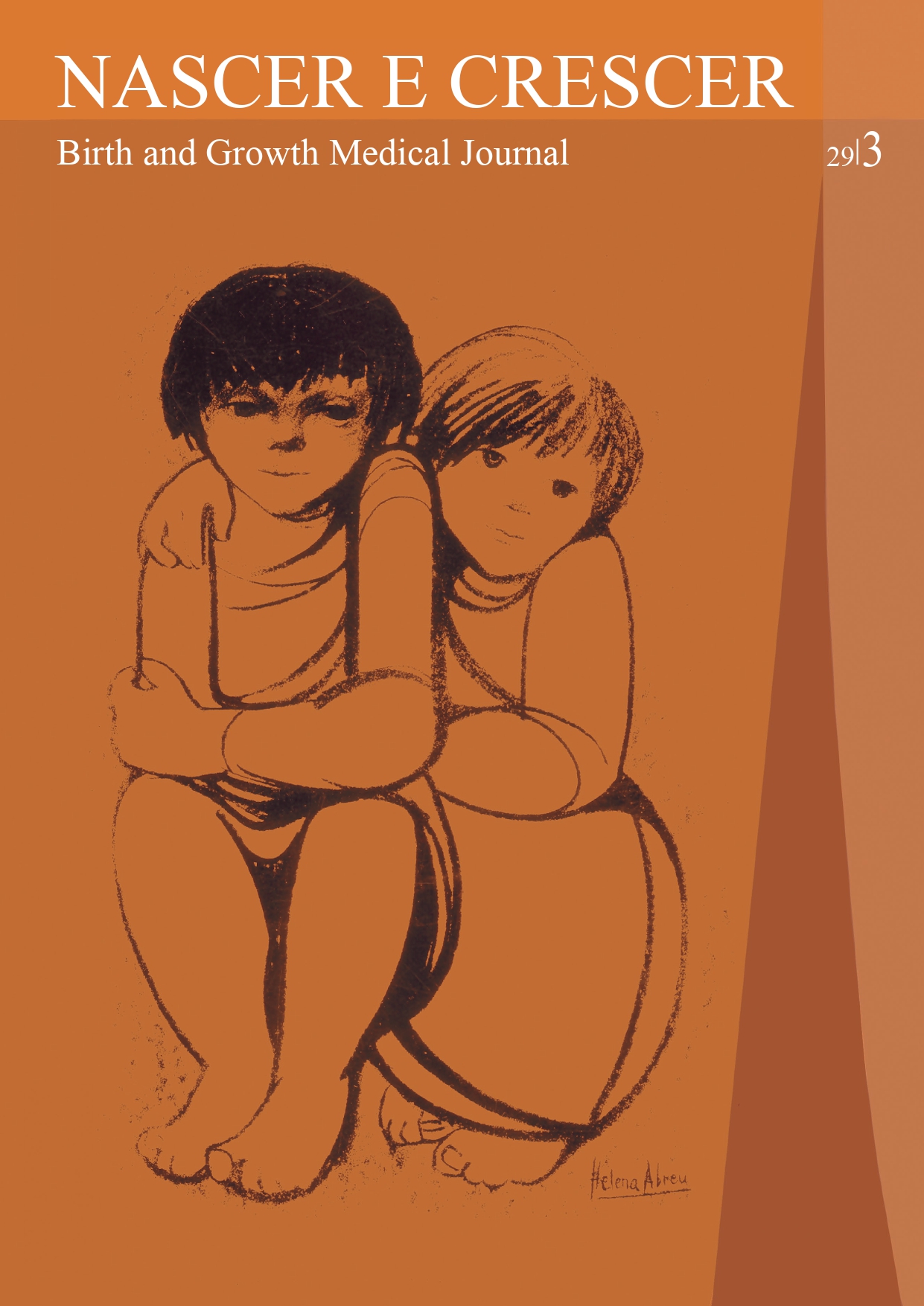Idiopathic spinal accessory nerve injury
DOI:
https://doi.org/10.25753/BirthGrowthMJ.v29.i3.18356Keywords:
muscular atrophy, nerve injury, pain, physiotherapy, shoulder pain, spinal accessory nerveAbstract
Palsy of the eleventh cranial nerve – or spinal accessory nerve (SAN) − is a rare cause of scapular winging, leading to painful upper extremity disability due to weakness and atrophy of the trapezius muscle. Most SAN injuries are iatrogenic, and no specific pediatric epidemiology is known.
Herein is described the case of a 17-year-old adolescent referred to Physical and Rehabilitation Medicine consultation due to insidious right shoulder pain with two years of evolution.
Shoulder pain combined with muscular atrophy is suggestive of nerve lesion. Electromyography is the gold standard exam and showed segmental demyelination and axonotmesis in this case. After evaluation, the patient underwent physiotherapy, with excellent results.
In conclusion, SAN injury treatment can be conservative or surgical and physiotherapy is the basis of early treatment in most cases. Recovery can occur even after a significant period of time.
Downloads
References
Camp SJ, Birch R. Injuries to the spinal accessory nerve. J Bone Joint Surg. 2011; 93-B: 62-7.
Chandawarkar RY, Cervino AL, Pennington GA. Management of iatrogenic injury to the spinal accessory nerve. Plast Reconstr Surg. 2003; 111:611-7.
London J, London N, Kay S. latrogenic accessory nerve injury. Ann R Coll Surg Engl. 1996; 78:146-50.
Valtonen EJ, Lilius HG. Late sequelae of iatrogenic spinal accessory nerve injury. Acta Chir Scand. 1974; 140:453-5.
Prim MP, De Diego JI, Verdaguer JM, Sastre N, Rabanal I. Neurological complications following functional neck dissection. Eur Arch Otorhinolaryngol. 2006; 263:473-6.
Grossman JAI, Ruchelsman DE, Schwarzkopf R. Iatrogenic spinal accessory nerve injury in children. J Pediatric Surg. 2008. 43:1732-5.
Nakamichi KI, Tachibana S. Iatrogenic injury of the spinal accessory nerve. J Bone Joint Surg Am .1998; 80:1616–21.
Shen J, Chen W, Ye X, Qiu Y, Xu J, Zhu Y, et al. Ultrasound in the management of iatrogenic spinal accessory nerve palsy at the posterior cervical triangle area. Muscle Nerve. 2018; 59:64-9.
Nguyen C, Guérini H, Roren A, Zauderer J, Vuillemin V, Seror P, et al. Neuromuscular dynamic scapular winging: Clinical, electromyographic and magnetic resonance imaging diagnosis. Presse Med. 2015; 44:1256-65.
Akgun K, Aktas I, Uluc K. Conservative treatment for late-diagnosed spinal accessory nerve injury. Am J Phys Med Rehabil. 2008; 87:1015-21.
Göransson H, Leppänen OV, Vastamäki M. Patient outcome after surgical management of the spinal accessory nerve injury: A long-term follow-up study. SAGE Open Med. 2016; 4:2050312116645731.
Downloads
Published
How to Cite
Issue
Section
License
Copyright and Authors' Rights
All articles published in Nascer e Crescer - Birth and Growth Medical Journal are Open Access and comply with the requirements of funding agencies or academic institutions. For use by third parties, Nascer e Crescer - Birth and Growth Medical Journal adheres to the terms of the Creative Commons License "Attribution - Non-Commercial Use (CC-BY-NC)".
It is the author's responsibility to obtain permission to reproduce figures, tables, etc. from other publications.
Authors must submit a Conflict of Interest statement and an Authorship Form with the submission of the article. An e-mail will be sent to the corresponding author confirming receipt of the manuscript.
Authors are permitted to make their articles available in repositories at their home institutions, provided that they always indicate where the articles were published and adhere to the terms of the Creative Commons license.


